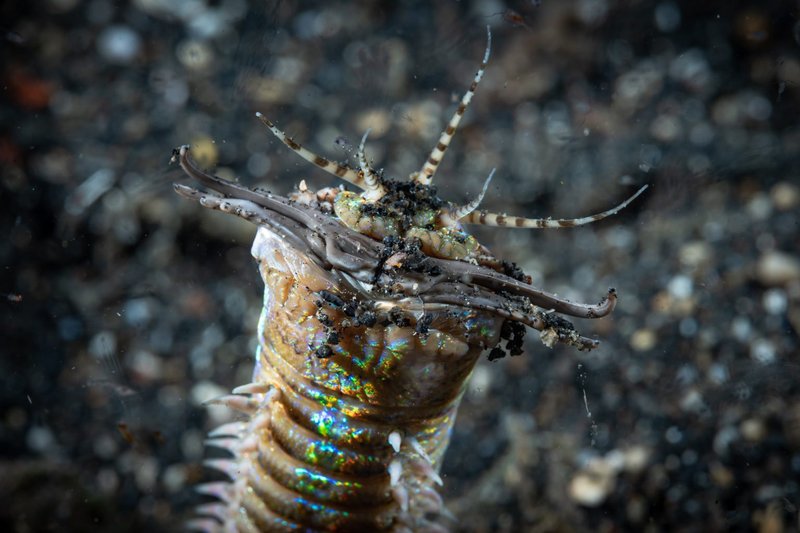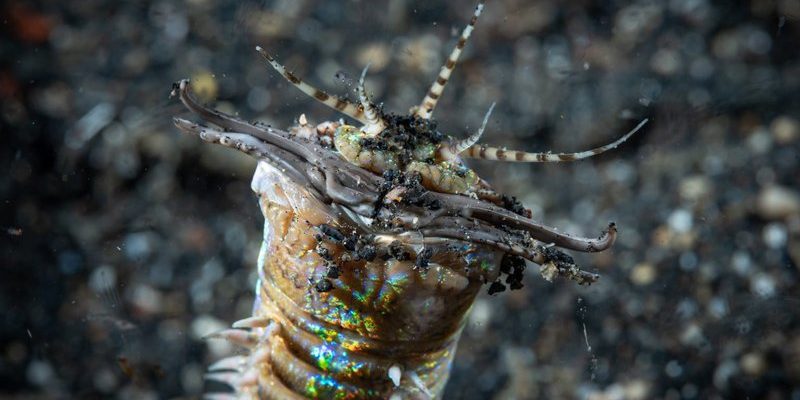
Let’s dive into this topic and explore who might want to take a bite out of these remarkable marine worms. From the depths of the ocean, where bobbit worms reign, to the creatures that threaten their existence, we’ll break down the predator-prey dynamics and see what makes this relationship so compelling. So grab your metaphorical snorkel; we’re going underwater to learn about the fascinating world of bobbit worms and their predators!
What is a Bobbit Worm?
Before we jump into the predators, let’s talk about what a bobbit worm actually is. Imagine a creature that can grow up to ten feet long, sporting striking colors of green, brown, and red. Found primarily in warm, tropical waters, these worms can be quite elusive. They spend most of their time buried in the substrate, using their sharp jaws to snag unsuspecting prey, like fish and crustaceans, that swim a little too close.
Bobbit worms are equipped with **amazing adaptations**. Their long bodies are segmented, and they have multiple tentacle-like structures on their heads, which they use to detect movement in the water. When a fish ventures near, they strike with lightning speed, catching their meal almost before it knows what hit it. This hunting method, combined with their impressive size, makes them one of the ocean’s top predators.
Yet, even the mightiest have their enemies. Understanding who hunts the bobbit worm can help us appreciate the balance of marine ecosystems and the role these worms play within it.
Common Predators of Bobbit Worms
You might be surprised to learn that bobbit worms do have a few natural enemies. Despite their formidable hunting capabilities, they are not at the top of the food chain. Several marine creatures see them as an opportunity for a meal. Here are some of the main predators that target these intriguing worms:
- Fish: Several species of fish, particularly larger ones, will eat bobbit worms if they come across them. Fish like snapper can be particularly problematic for these worms.
- Sea Turtles: Some sea turtles, especially loggerheads, are known for munching on various types of marine worms, including bobbit worms. Their tough mouths can handle the tough exterior of the worm.
- Crustaceans: Certain crustaceans, like large crabs and prawns, also enjoy a good worm meal. They use their pincers to grab hold of the bobbit worm and pull it out of its sandy hiding spot.
It’s fascinating to see how the bobbit worm’s position on the food chain can shift. While they may be fierce hunters, they still need to be wary of these predators.
The Role of Competition in the Ocean
In the ocean, competition is a constant factor, not just among predators and their prey but also within the same species. Bobbit worms, like many creatures, face competition for resources. In areas where food is scarce, their survival can become even more challenging.
Here’s the thing: when multiple bobbit worms inhabit the same area, they may compete for the same food sources. This competition can lead to stress and a decline in their population. Plus, when larger fish or sea turtles are present, the bobbit worm has to be even more cautious. It’s a delicate balance that underscores the importance of a healthy marine ecosystem.
You might be wondering how this competition affects their reproductive strategies. Bobbit worms can spawn at different times of the year, depending on environmental conditions, to maximize their chances of survival. By releasing their eggs when predators are less active, they increase the likelihood of their young making it to maturity.
How Do Bobbit Worms Defend Themselves?
You might think that being a predator means you don’t need to worry much about defense, but bobbit worms have their tricks. While they can’t swim or flee like many fish, they have adaptations that help them avoid becoming a meal.
First off, their **camouflage** is quite impressive. Bobbit worms blend in seamlessly with the sandy ocean floor, making it difficult for predators to spot them. They often remain hidden, with just their heads protruding from the substrate, waiting for the right moment to strike their own prey.
Additionally, when they sense danger nearby, they can retract quickly into their burrows. This sudden move can make it hard for predators that rely on sight or movement to catch them. Think of it like a magician disappearing in a puff of smoke!
The Impact of Habitat on Bobbit Worm Predators
The habitat of a bobbit worm affects its vulnerability to predators significantly. They thrive in warm, tropical waters, often in coral reefs or sandy substrates where they can conceal themselves. However, these environments also house potential predators.
In coral reef ecosystems, for example, the diversity of fish species creates a complex interaction between species. The presence of smaller fish, who might also feed on coral and smaller organisms, can reduce the number of larger fish that would have targeted bobbit worms. Essentially, a healthy reef can serve as a sanctuary for them, while a damaged reef might increase predator presence.
Additionally, the depth of their habitat plays a role. Bobbit worms in deeper waters might find fewer predators compared to those in shallow areas where fish and turtles are more common. This highlights how changes in environmental conditions can impact bobbit worm populations, shifting the predator-prey dynamics.
Why Understanding Bobbit Worm Predators Matters
So, why should we care about bobbit worms and their predators? Understanding this relationship is crucial for several reasons. For one, it reveals the interconnectedness of marine life. If bobbit worms disappear, the creatures that rely on them for food could face challenges too. It’s all part of a delicate web of life.
Moreover, studying these interactions allows marine biologists to make informed decisions about conservation strategies. When we recognize the roles different species play, we can better protect these fragile ecosystems. Given that many marine habitats are threatened by pollution and climate change, maintaining biodiversity is more important than ever.
In conclusion, while bobbit worms are impressive predators in their own right, they’re also part of a larger ecological story. Understanding their natural enemies not only helps us appreciate these unique creatures but also highlights the importance of supporting marine ecosystems.
As we continue to explore our oceans, let’s keep an eye on bobbit worms—and perhaps think of them as ambassadors, reminding us of the intricate balance of life beneath the waves.

